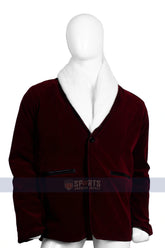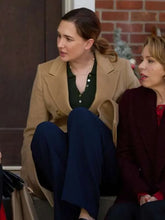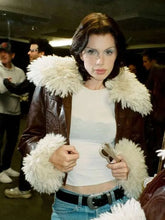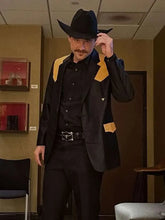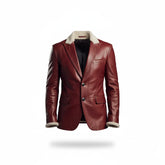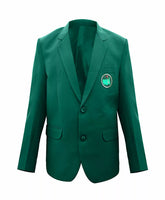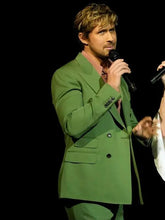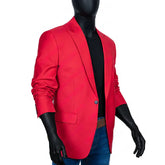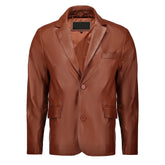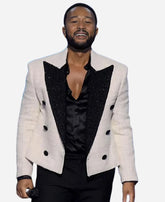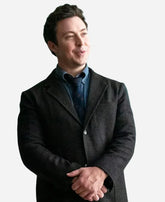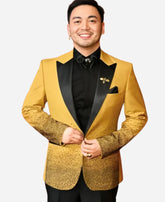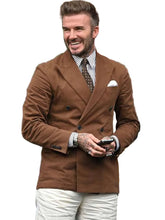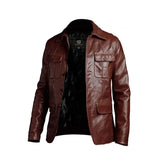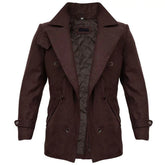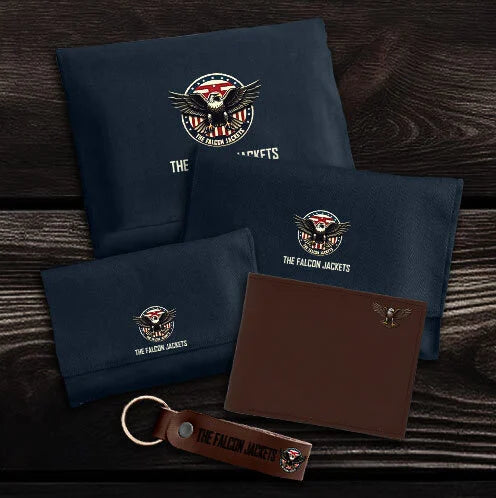The Real Deal on Men’s Blazers What Actually Works And What Doesn’t
Let’s cut to the chase — you’re not here to browse. You’re here because you need a blazer that does the job. Whether it’s for a wedding, a client meeting, a weekend dinner, or just looking sharp without trying too hard — the right men’s blazer changes everything. But walk into any store or scroll through any site and you’re hit with options that look the same but fit nothing like they should. Fabric that pills after two wears. Lapels that scream 2007. Sleeves that end at your elbow. We’ve all been there.
This isn’t a catalog. It’s a field guide — written by someone who’s tailored, styled, and ruined (yes, ruined) enough blazers to know what matters.
Why Most Men’s Blazers Fail — And How to Dodge the Trap
Blazers aren’t one-size-fits-all. Literally. And figuratively.
Too many guys grab “slim fit” because it sounds modern — then end up looking like they’re wearing a straitjacket. Others go “classic” and drown in fabric that adds 10 years and 20 pounds. The truth? Fit isn’t about labels. It’s about proportion. Shoulder seams should sit right at your shoulder bone — not inching toward your bicep. Sleeve length? A sliver of shirt cuff should peek out. No more, no less.
And fabric? Don’t get fooled by “100% polyester = wrinkle-free.” It also means “shiny under office lights” and “traps sweat like a sauna.” Wool blends? Far more forgiving. Cotton? Perfect for spring, terrible for winter. Velvet? Killer for parties, awkward for boardrooms.
What Type of Blazer Fits Your Life? (Not Just Your Body)
You don’t need five blazers. You need the right one for what you actually do.
-
Daily Grind / Business Casual? Go for a navy or charcoal single-breasted, notch lapel in wool blend. Unstructured shoulders. Minimal lining. Lets you move, breathe, and still look put-together when you’re running from Zoom to coffee to commute.
-
Weddings / Cocktail Nights? Try a peak lapel in midnight blue or black. Maybe even velvet if the vibe’s luxe. Slimmer cut, but not skin-tight. Pair with dark denim or tailored trousers — no tux required.
-
Travel Warrior? Lightweight, wrinkle-resistant fabric (think merino wool or high-twist cotton). Unlined or half-lined. Two inside pockets — one for passport, one for phone. Navy or grey — hides stains, matches everything.
-
Weekend Errands / Casual Outings? Cotton or linen blend. Patch pockets. Maybe even a pattern — houndstooth, subtle plaid, or micro-check. Throw it over a tee and chinos. Instant upgrade without looking like you tried.
-
Big & Tall or Petite Frame? Skip “regular fit” labels. Look for extended sizing or short-length options. Brands like Charles Tyrwhitt, TM Lewin, and even ASOS have dedicated lines that don’t treat your body like an afterthought.
The Lapel Lowdown — Because It Matters More Than You Think
Lapel style isn’t just decoration. It frames your face, changes your silhouette, and signals the occasion.
-
Notch Lapel — The safe bet. Office-friendly. Versatile. Goes with everything. If you’re buying your first blazer, start here.
-
Peak Lapel — Bold. Formal. Adds height and presence. Ideal for evening events, sharp interviews, or when you need to command a room.
-
Shawl Collar — Smooth. Sophisticated. Usually seen on tuxedos or velvet jackets. Best for dinners, galas, or when you’re feeling James Bond-level confident.
Fabric Truths Nobody Tells You
|
Fabric |
Best For |
Avoid If… |
Pro Tip |
|
Wool Blend Blazer |
Year-round, office, travel |
You’re allergic or live in extreme humidity |
80% wool / 20% poly = durability + drape |
|
Spring, casual, weekends |
You need structure or live where it rains |
Wrinkles easily — steam often |
|
|
Linen |
Summer, beach weddings, resort wear |
You hate looking “lived-in” |
Embrace the creases — it’s part of the charm |
|
Velvet |
Parties, winter nights, fashion-forward looks |
You’re in a conservative industry |
Stick to deep tones — burgundy, emerald, navy |
|
Night outs, concerts, streetwear edge |
You need to look “corporate” |
Go matte, not shiny. Brown or black only. |
|
|
Polyester |
Budget buys, infrequent wear |
You care about breathability or texture |
Feels cheap fast — okay for one-season use |
Color Guide — What Each Shade Says About You
-
Navy — The ultimate workhorse. Professional, slimming, goes with every shirt and shoe. Own this first.
-
Charcoal Grey — Slightly more formal than navy. Pairs beautifully with bold shirts or patterned ties.
-
Black — Reserved for evenings, funerals, or fashion statements. Too harsh for daylight unless styled right.
-
Beige / Khaki — Warm-weather winner. Looks amazing with white tees or light denim. Avoid if you spill coffee often.
-
Burgundy / Green — Personality picks. Show you’ve got taste — but only if the cut is clean and fabric luxe.
-
White / Cream — High-risk, high-reward. Perfect for summer weddings. Keep it crisp — one stain and it’s done.
Styling Hacks That Actually Work (No Fashion Blogger Fluff)
-
With Jeans? Dark, slim-fit denim. No rips. Tuck in a crisp white tee or fine-gauge knit. Roll sleeves once. Leather boots or clean white sneakers.
-
Over a Hoodie? Only if it’s a slim, unstructured cotton blazer. Navy or grey. Hoodie must be slim, neutral, no logos. This is “smart casual” done right — not “I gave up.”
-
For Interviews? Navy blazer + light blue shirt + grey trousers. No tie needed unless the company’s old-school. Polished loafers. Watch with a leather strap.
-
Airport Ready? Lightweight wool, two patch pockets, interior zip pocket. Wear over a merino tee. Packable. Doesn’t crease. Looks fresh after 8 hours in a seat.
FAQs — Straight Answers, No Runaround
-
Q: Can I wear a blazer with jeans and still look professional?
A: Absolutely — if the blazer’s structured (not boxy), the jeans are dark and tailored, and your shoes aren’t trainers. Add a button-down or fine-knit polo. Instant upgrade.
-
Q: What’s the difference between a suit jacket and a blazer?
A: Suit jackets match trousers in fabric and color. Blazers are standalone — often in solid colors, contrasting buttons (like brass or horn), and meant to be mixed with chinos, denim, or odd trousers.
-
Q: Should I size up for layering?
A: Only if you’re wearing thick sweaters underneath. Otherwise, stick to your true size. A well-cut blazer should accommodate a dress shirt or thin knit without pulling.
-
Q: Are double-breasted blazers still in style?
A: Yes — if you’ve got the frame for it. Broad shoulders, tall build? It’ll look powerful. Slim or short? Stick to single-breasted. Modern DBs are cut closer to the body — no 80s boxiness.
-
Q: How do I know if a blazer is good quality?
A: Check the seams — should lie flat, no puckering. Buttons should be horn or corozo, not plastic. Lining should be fully attached, not floating. Fabric shouldn’t feel stiff or synthetic.
-
Q: Can I wear a velvet blazer to the office?
A: Depends on your workplace. Creative fields? Go for it — in deep, muted tones. Corporate finance or law? Save it for after-hours. Texture matters — matte velvet, not shiny.
-
Q: What’s the best blazer for hot weather?
A: Unlined cotton or linen blend. Light colors (beige, stone, light grey). Patch pockets. No shoulder padding. Roll the sleeves. Pair with linen trousers or tailored shorts if you’re brave.
Final Word — Buy Less, Wear More
Don’t chase trends. Don’t buy six blazers because they’re on sale. Invest in one that fits like it was made for you — in a fabric that suits your climate, a color that works with your wardrobe, and a cut that flatters your frame. That’s the blazer you’ll reach for again and again. The one that gets compliments without screaming for attention. The one that lasts.
Everything else? Just noise.


